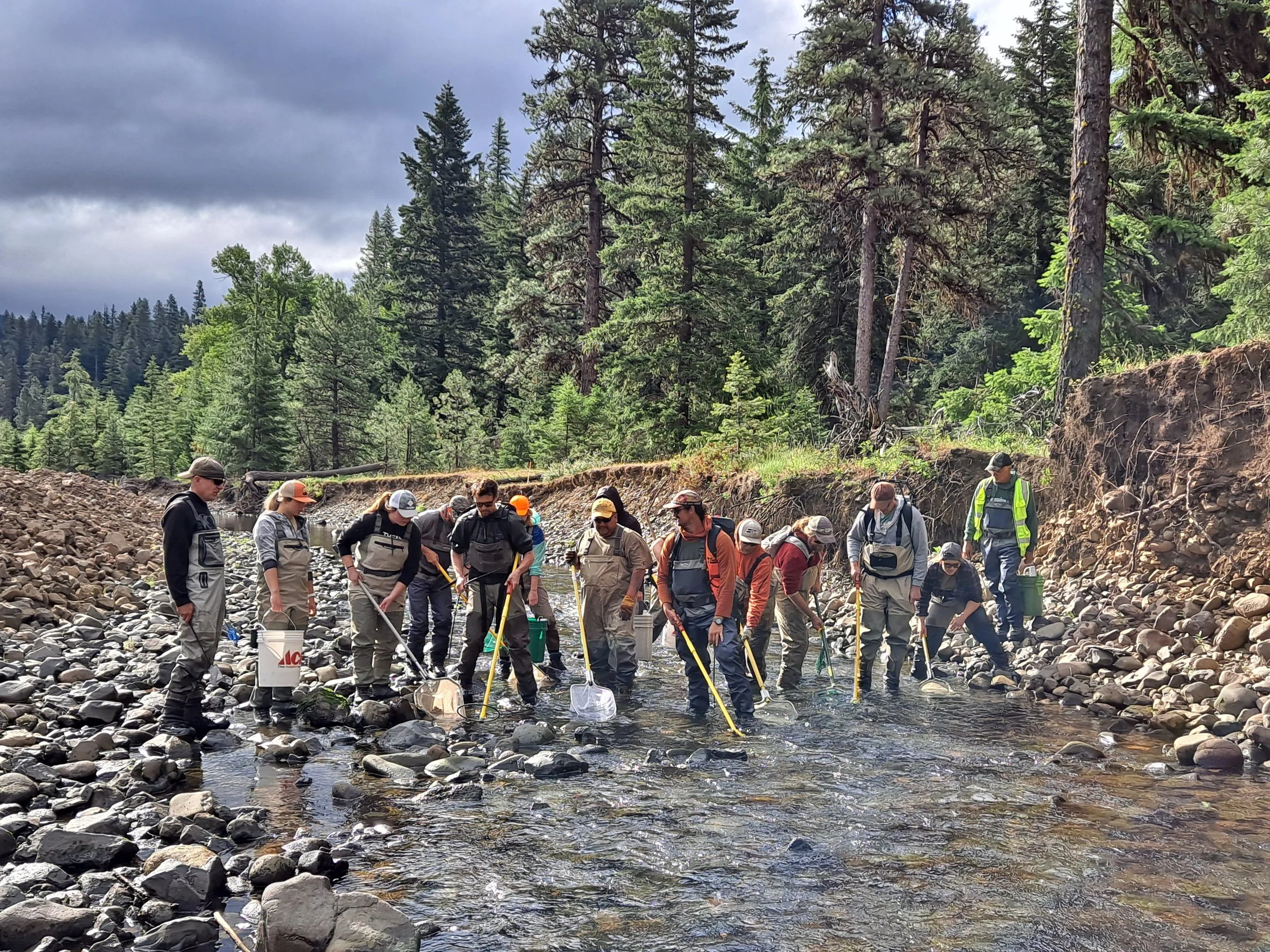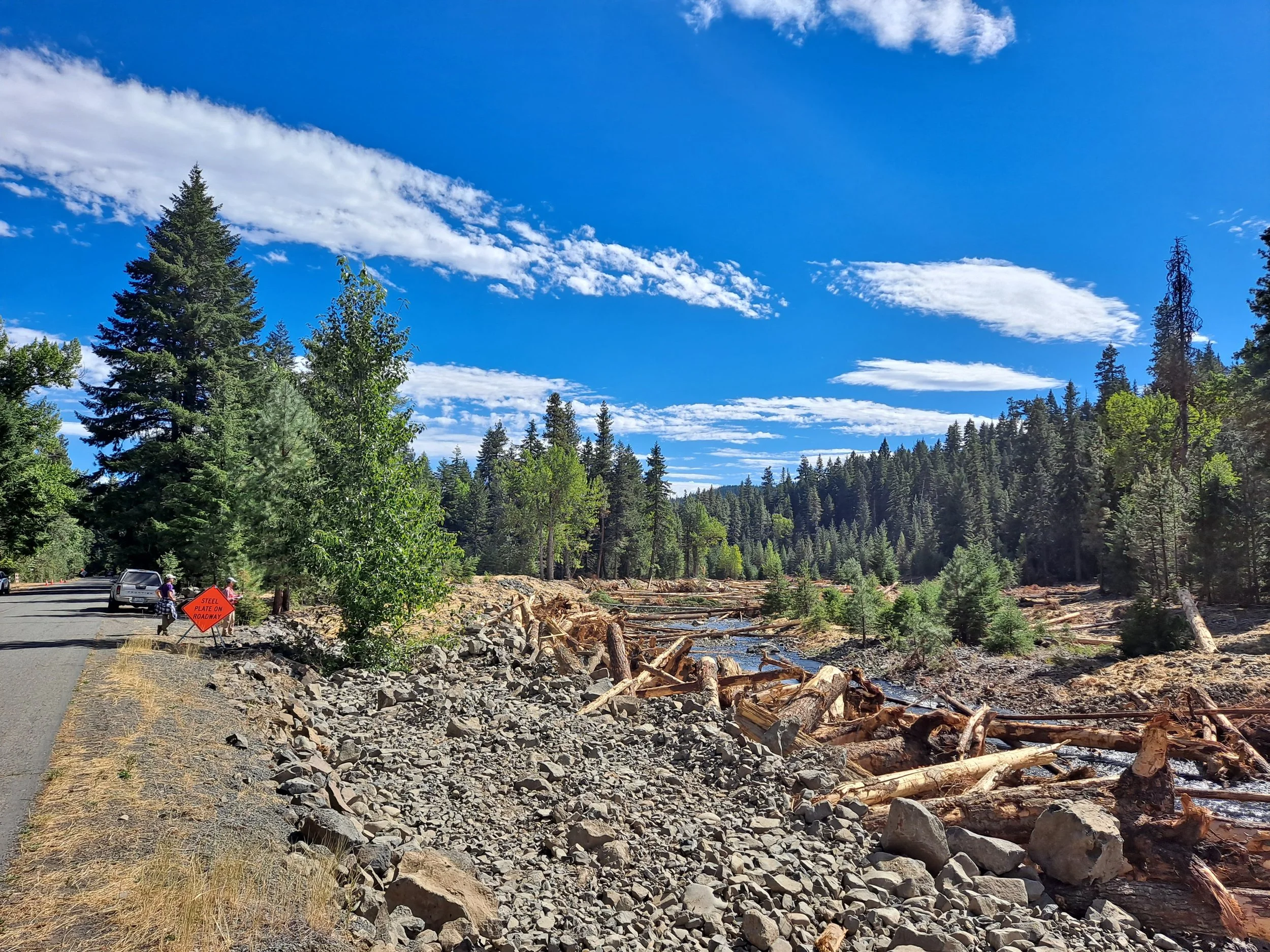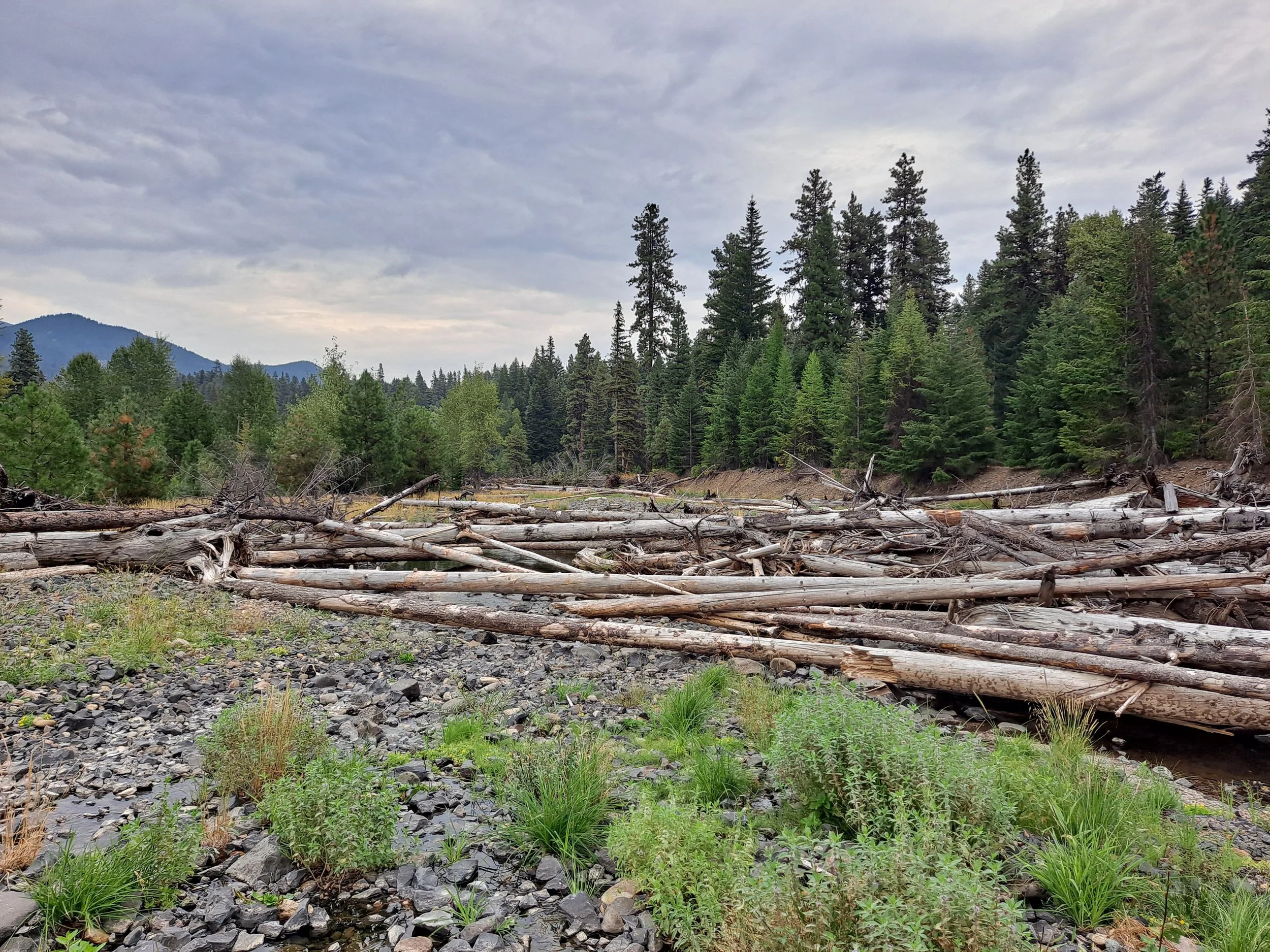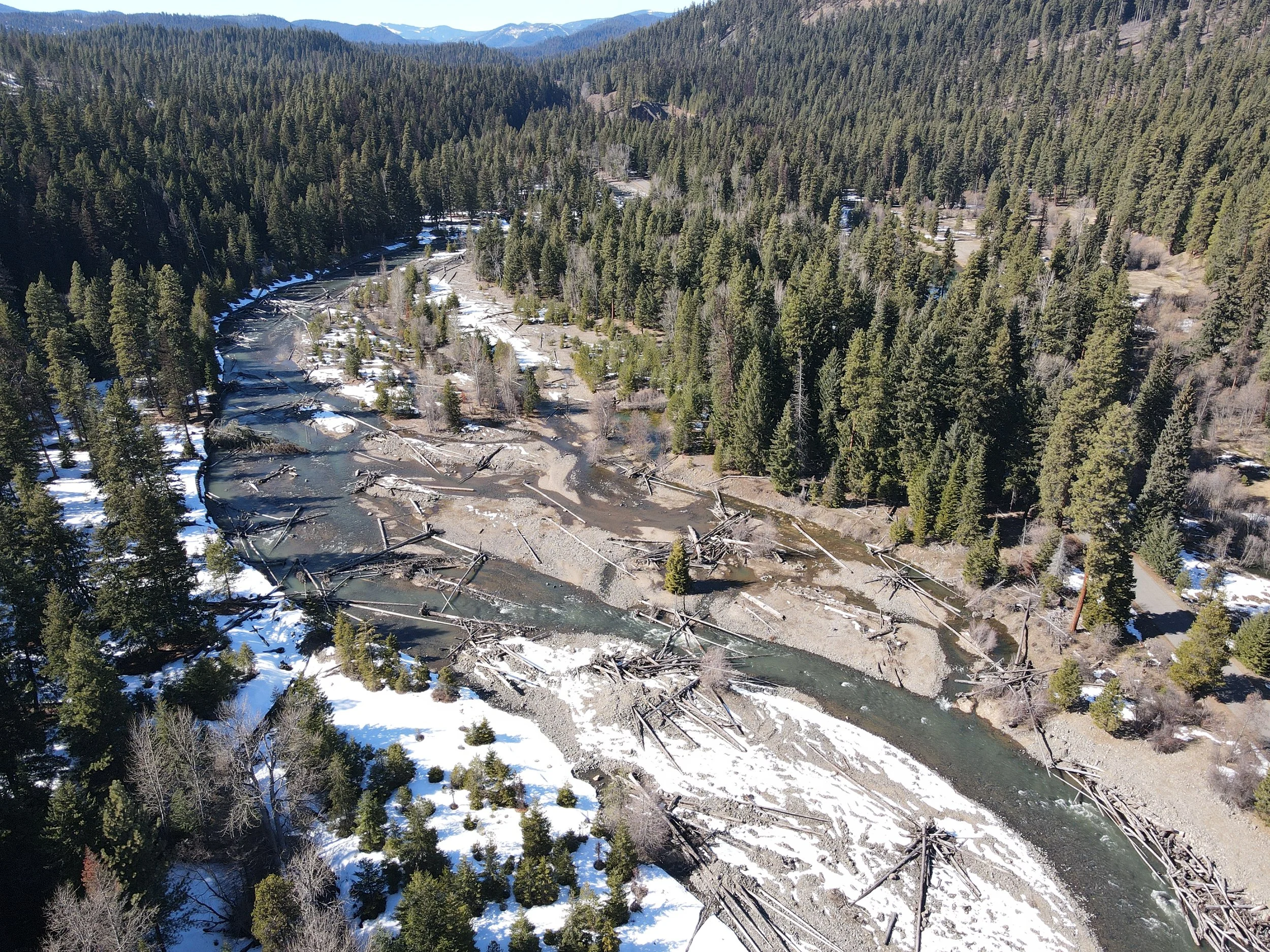
Little Naches River and Floodplain Restoration
Over the past century, the Little Naches River has been severely altered by a variety of land-use practices that have negatively impacted native fish species. Despite this degradation, the Little Naches River is home to resident cutthroat and rainbow trout, mountain whitefish, steelhead, bull trout, coho, and spring Chinook salmon. This system is designated Critical Habitat for ESA-listed Mid-Columbia steelhead and bull trout. MCF and partners completed large scale floodplain reconnection along more than one mile of the river in 2022, dramatically improving in-stream habitat, raising the local water table, and expanding wetlands and riparian vegetation.
About the Project
Background
A 2017 study highlighted a stretch of the Little Naches River (river miles 3.25–4.29) as a top priority for restoration. Over the years, roads, levees, and the removal of natural log jams have squeezed the river into a narrow path and taken away the wood it needs to create healthy fish habitat. In the 1980s, parts of the riverbed were even bulldozed during low flows.
All of this has cut the river off from its natural floodplain and made spring runoff more powerful and damaging.
Looking downstream at the left bank levee on the Little Naches River in October 2020.
Project Development
In 2018, a coalition of agency, tribal, Non-Governmental biologists, and the U.S. Forest Service secured Yakima Basin Integrated Plan funding for project design, with Mid-Columbia Fisheries (MCF) selected to manage the effort. Working with Tetra Tech, the Forest Service, and other partners, MCF completed design and permitting for a habitat restoration project supporting fish recovery. MCF then secured funding to build the project, receiving a Streamflow Restoration grant from the Washington Department of Ecology and Central Washington Initiative funds from the U.S. Forest Service in 2021.
Project engineer Chad McKinney and Naches Ranger District Fisheries Biologist Gary Torretta discuss the project plans in fall of 2020.
Implementation
Construction took place in summer 2022, with BCI Contracting Inc. hired to remove two channel-confining levees, dismantle roughly 230 feet of rock armoring, regrade the channel with native material, reconnect two side channels, install 65 wood habitat structures, and place additional trees across the floodplain. The image (right) shows the downstream following levee removal and wood placement in September 2022. Trees (18–23" diameter) used for these structures and floodplain roughness were harvested adjacent to the site under a USFS thinning prescription—providing major cost savings and accelerating desired habitat conditions. Before dewatering began in July 2022, partners from multiple organizations assisted with fish removal (left) throughout the project area.
Project Performance
After construction, high flows in fall 2022 and spring 2023 helped the placed wood consolidate into large, stable jams. By spring 2023, cottonwood seedlings were already establishing on the newly reconnected floodplain. Despite three consecutive drought years, the main channel and side channels have remained wetted, and the wetland area (feature in center image) has expanded from 1.2 acres pre-project to 5.04 acres in 2025. Naturally recruited cottonwoods now average 50 seedlings per square meter in these wetlands.
In spring 2025, steelhead were observed spawning in the project reach, and a large downstream log jam continues to maintain a summer pool (August 2025).
Project Presentations
Some of the innovations used when developing and monitoring the Little Naches River restoration project were shared during the 2023 Salmon Recovery Conference hosted by the Washington State Recreation & Conservation Office.
We welcome you to view this presentation by clicking this YouTube video link.
Thank you!
We would like to thank those who contributed funding for this project - restoration projects such as these could not be accomplished without their support:
Yakima Basin Integrated Plan
Washington State Department of Ecology
United States Forest Service









